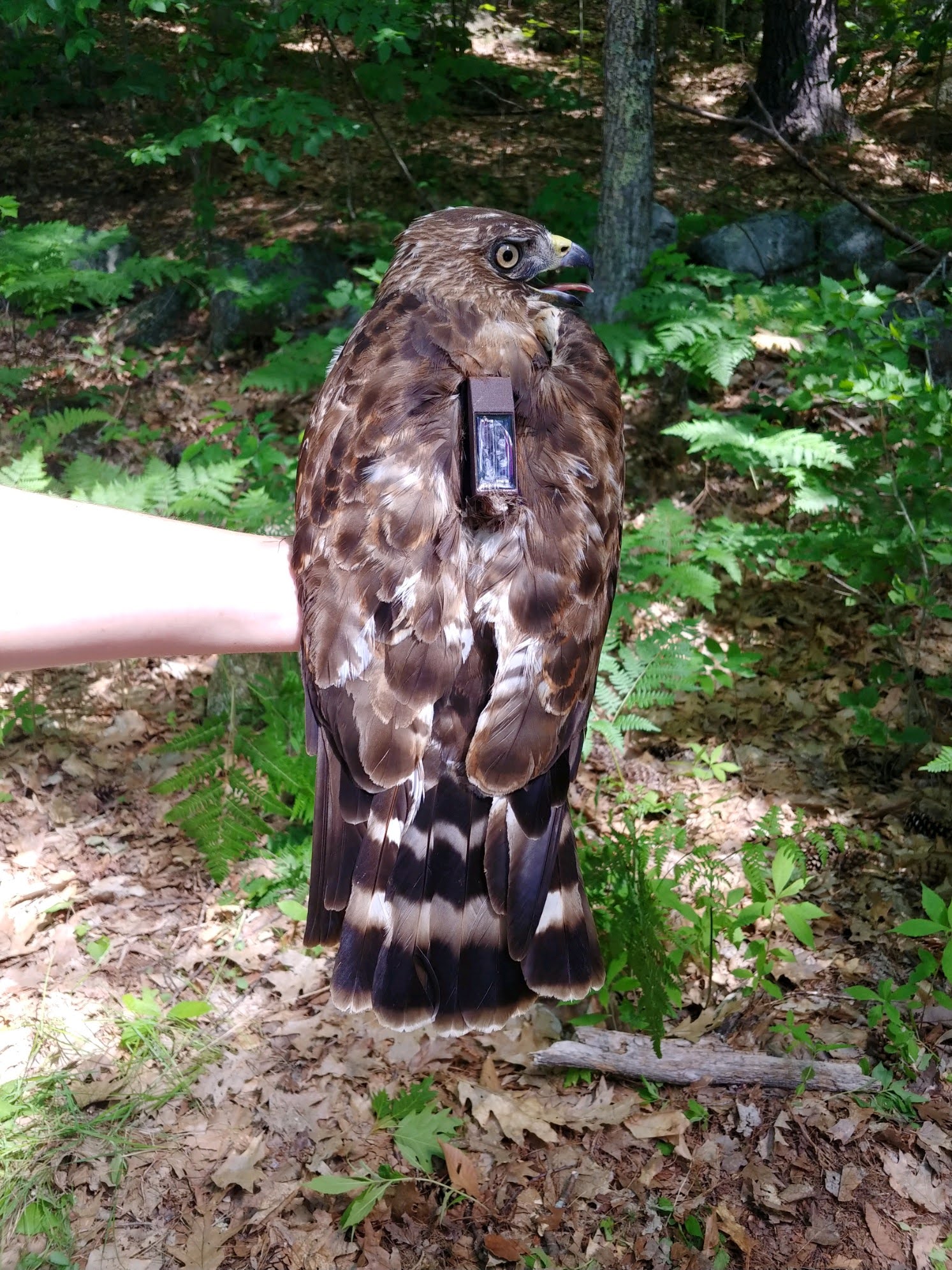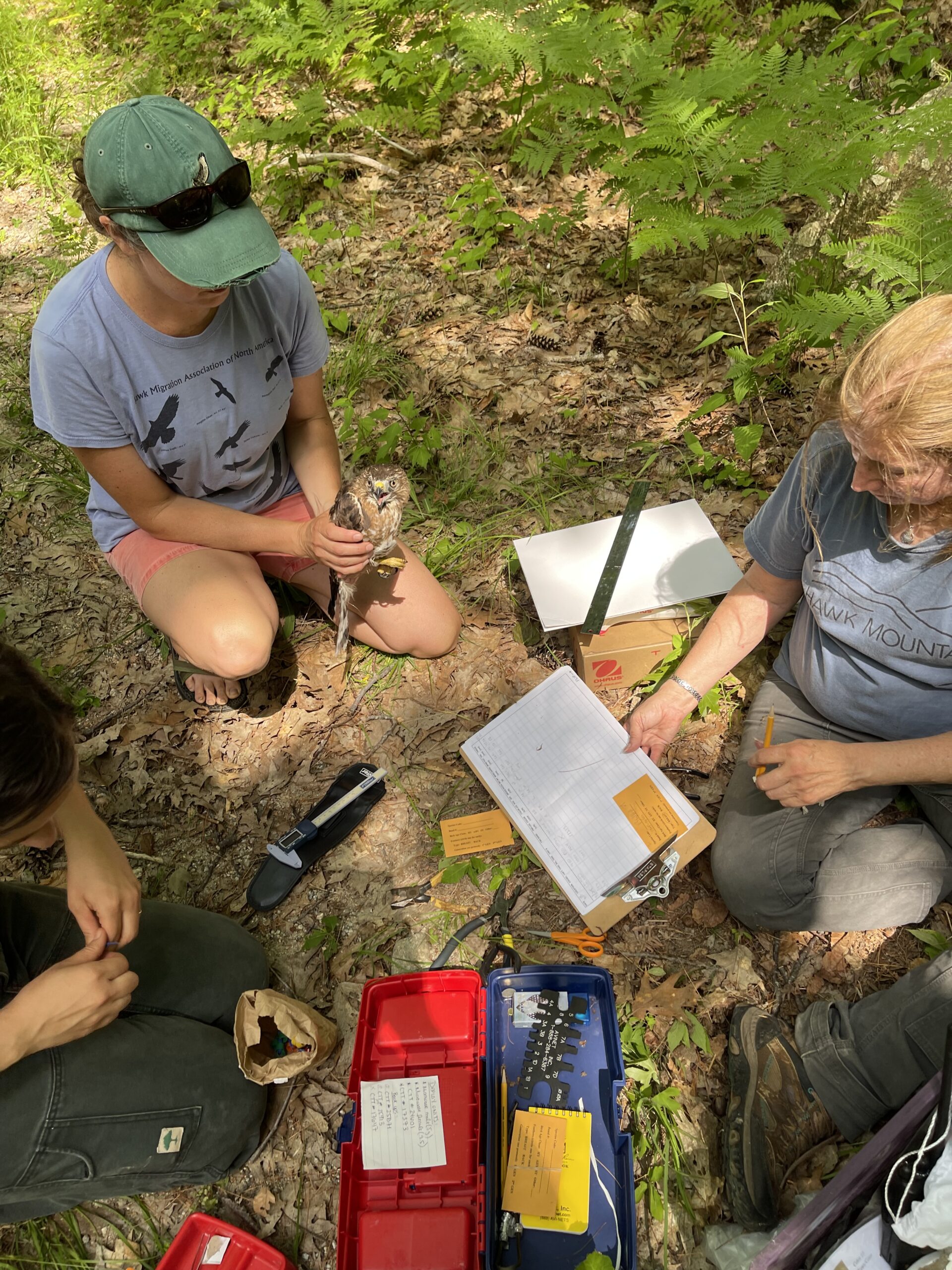When studying avian breeding ecology, the first questions that come to our minds are: where does the bird breed? How much space does it need? Does it change annually? Indeed, understanding home range size, and identifying the habitat features influencing it, is key to addressing potential conservation issues.
Unfortunately, these quite simple tasks may become a challenge when studying raptors, whose unique biology makes them generally move greater distances than other birds and, thus, require bigger-ranging areas for living. In the case of the Broad-winged Hawk (Buteo platypterus, hereafter broadwing), its secretive and elusive habits have hindered the study of its breeding home ranges for decades.
Although it migrates in great numbers between North and South America, this small buteo silently starts building its nests in late April to early May. These enigmatic nesters can often slip by unseen, especially during incubation and the early nestling stages. Within the last decades, the Broad-winged Hawk has shown declines in some states and provinces in its breeding range.
That is why Hawk Mountain Sanctuary Association (Kempton, Pennsylvania), and the team lead by Drs. Laurie J. Goodrich and Rebecca A. McCabe, launched The Broad-winged Hawk Project (www.hawkmountain.org/broadwing) in 2014. The project focuses on various aspects of the species ecology during both the breeding and nonbreeding periods. By capturing adult broadwings at the nest and deploying satellite and GPS-GSM transmitters on them, the research team is collecting movement data on their migratory routes, stopovers, wintering and breeding home ranges, and insights on the threats they face throughout their annual cycle.
In 2022, while I was a Conservation Science trainee at Hawk Mountain Sanctuary, I actively participated in this project, searching for nests and monitoring reproductive pairs. I have to admit that it was a challenging activity; most of the times I came back home really frustrated, but eventually, we were able to find half a dozen active nests that made the task worth the effort! At the same time, we started analyzing the results of more than 7 years of tracking data, in order to unravel the enigma of this species during the breeding period.
“Homeward bound, I wish I was…”
One of the first discoveries of our recently published study is the confirmation that males have larger breeding areas (more than 20 times!) than females. This is in line with the strong division of labor between sexes observed in many raptors, also in broadwings: females carry out most of the incubation and nestling brooding, whereas males are in charge of hunting for prey and, thus, require larger areas.
However, probably the most exciting result of this study (at least, for me!) is the discovery that the broadwings are… homeward bound! This means that individuals tend to use the same breeding ranging area across years, and it was already suspected by the research team due to field records. This is quite incredible, taking into account that these animals travel more than 8,000 km during migration and still are able to re-settle in the same breeding sites year after year (overlap areas higher than 85%), placing their nests less than 200 meters away from those of previous seasons! Additionally, this was found for both females and males, so the lyrics from Simon and Garfunkel would fit perfectly now: “I wish I was homeward bound, home where my love lies waiting, silently for me”.
Our findings indicate that broadwing breeding home ranges and nesting locations may remain stable over several years. Thus, it is clear that understanding and protecting the habitats used by nesting broadwings (and by any other raptor species that call the forest their home) during breeding could be key for their long-term conservation.
MSc Diego Gallego García
Proyecto Águila del Chaco – Chaco Eagle Project
Center for the Study and Conservation of Raptors in Argentina (CECARA)
Institute of Earth and Environmental Sciences of La Pampa (INCITAP)
National Scientific and Technical Research Council (CONICET)
The results of this study were recently published in the Journal of Field Ornithology:
Gallego, D., R. McCabe, and L. Goodrich. 2023. Homeward bound: annual breeding home range size and overlap in Broad-winged Hawks (Buteo platypterus) and the effects of sex, productivity, and ecoregion. Journal of Field Ornithology 94(4):9. https://doi.org/10.5751/JFO-00371-940409
Header photo: Broad-winged Hawk (Buteo platypterus). Photo by Bill Moses


